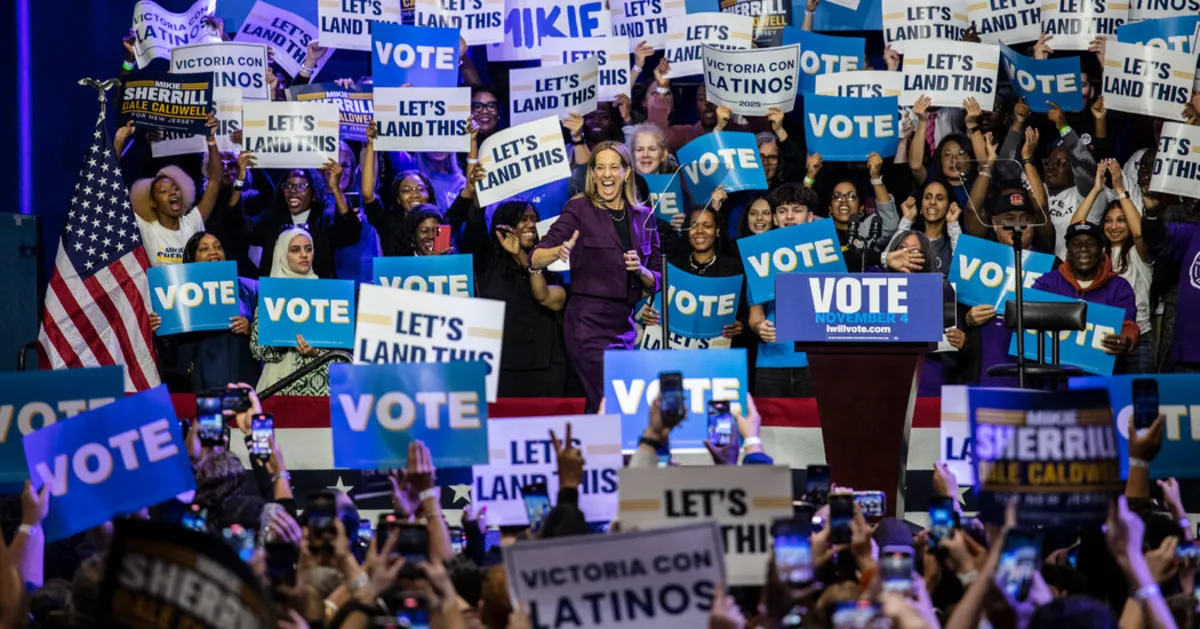
In the political landscape shaped by the Trump era, Democrats have historically excelled among highly engaged and educated voters in low-turnout, off-year elections. However, they have often struggled to maintain this momentum when less regular and less educated voters participate in presidential elections. The recent victories of Democratic candidates in the Virginia and New Jersey governor’s races, however, reveal a more nuanced picture. On Tuesday, Democrats not only increased their voter turnout but also managed to attract a significant portion of President Trump’s supporters, as indicated by exit polls and voter file data.
While determining the precise details of this electoral shift can be challenging, available data suggests that the Democratic gains were driven more by converting Trump supporters than by an overall superior turnout. This pattern is particularly evident in the cases of Abigail Spanberger in Virginia and Mikie Sherrill in New Jersey. The combination of a more Democratic electorate and successful outreach to swing voters was sufficient to transform Virginia and New Jersey from light blue states into strongholds for the Democratic Party.
Moreover, this electoral success allowed Democrats to recover from previous losses among Hispanic voters. A significant number of Trump’s newly acquired Hispanic supporters from the 2024 election chose to abstain from voting this time, while many others returned to the Democratic fold. This shift can be analyzed through two main lenses: exit polls and voter records.
Exit polls, though not perfect measures of the electorate, provide valuable insights into voter behavior and turnout. They often reveal how individuals voted in previous elections, which can illuminate trends in current electoral outcomes. In New Jersey and Virginia, exit polls indicated a more Democratic-leaning electorate compared to 2024, with respondents reporting an eight-point preference for Kamala Harris in New Jersey and a nine-point preference in Virginia. In contrast, Harris's actual wins in these states were narrower, at six points.
This discrepancy underscores that the Democratic victories were not merely a result of turnout but also stemmed from flipping a crucial segment of voters who had supported Trump in the past. In fact, both Sherrill and Spanberger managed to secure support from 7 percent of Trump’s 2024 backers. While this figure may appear modest, the implications of such a flip are significant, as it effectively adds one voter to the Democratic side while subtracting one from the Republican side, amplifying its impact.
In comparison, Jack Ciattarelli, the Republican candidate in New Jersey, flipped only 3 percent of Harris's supporters, while Winsome Earle-Sears in Virginia garnered a mere 1 percent of Harris's votes. The cumulative effect of these shifts transformed electorates that initially favored Harris by single digits into victories of +13 for Sherrill and +15 for Spanberger.
The trend among Hispanic voters further illustrates the Democrats' success. In New Jersey, exit polls revealed that Sherrill captured an impressive 18 percent of Trump’s Hispanic support, while also benefiting from heightened turnout among Democratic-leaning Hispanic voters. The exit poll indicated that Hispanic voters in New Jersey supported Harris by 25 points, a significant increase compared to Harris's nine-point win among Hispanic voters in the 2024 election. Consequently, Sherrill achieved a remarkable 37-point lead among Hispanic voters this time.
For a more granular understanding of voter behavior, individual-level voting records serve as the gold standard. While this data typically takes months to become accessible, nine counties in New Jersey, which encompass nearly half of the state’s electorate, have already provided early voting records. This data reveals that Democrats enjoyed a roughly 19-point turnout advantage among registered voters, an increase from the 16-point edge observed in 2024. This net shift of approximately 2.5 points aligns with the findings from exit polls.
However, this party registration shift alone does not fully explain Sherrill's nearly nine-point lead compared to the 2024 vote for Harris. More sophisticated modeling, which incorporates Times/Siena poll data, indicates that Sherrill's net gain from turnout alone was approximately 3.5 points, still insufficient to account for her broader electoral success. Hence, both exit polls and voter records corroborate the notion that while Democratic turnout improved, a significant portion of Trump’s supporters also shifted allegiance, bolstering the Democratic cause.
As we reflect on the outcomes of the Virginia and New Jersey governor’s races, it becomes clear that the landscape of voter engagement is evolving. The findings suggest that Democrats are not only mobilizing their base but are also capable of appealing to disenchanted segments of the Republican electorate. This dual strategy of enhancing turnout while flipping former Trump supporters could pave the way for future Democratic successes in upcoming elections.